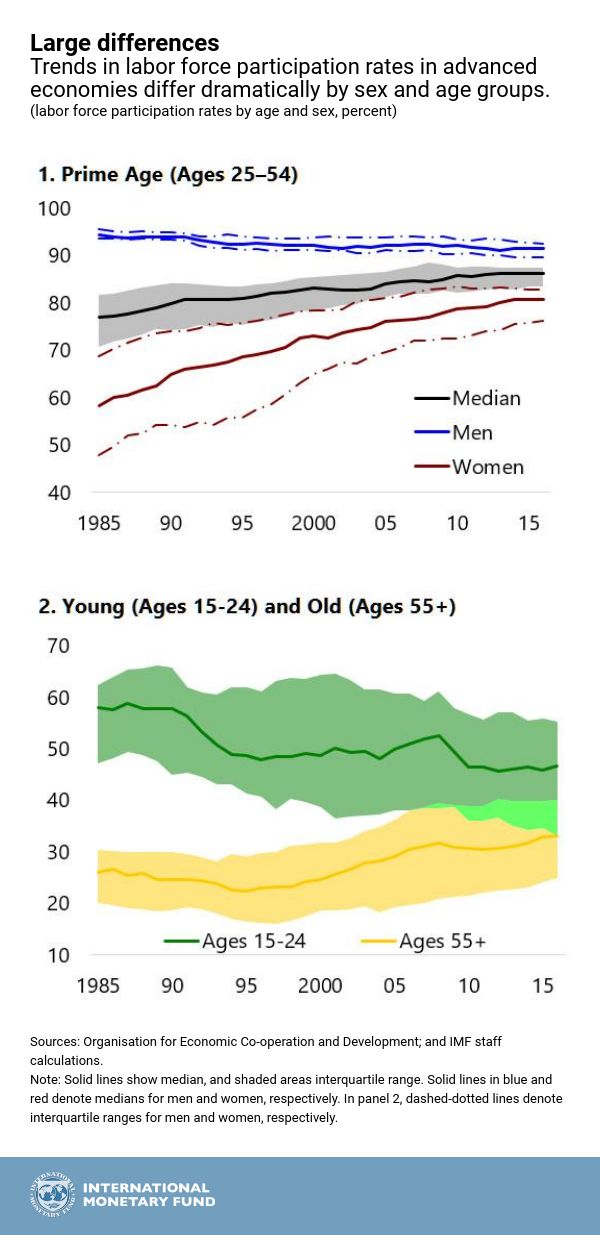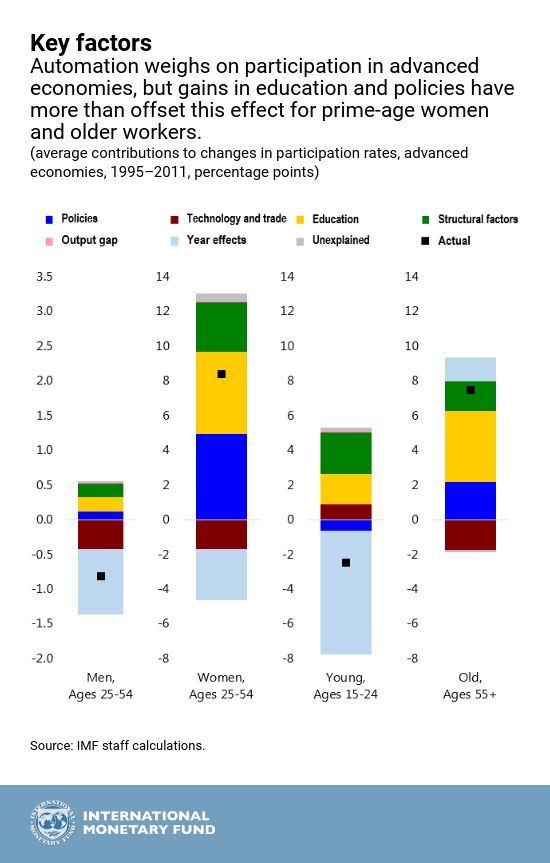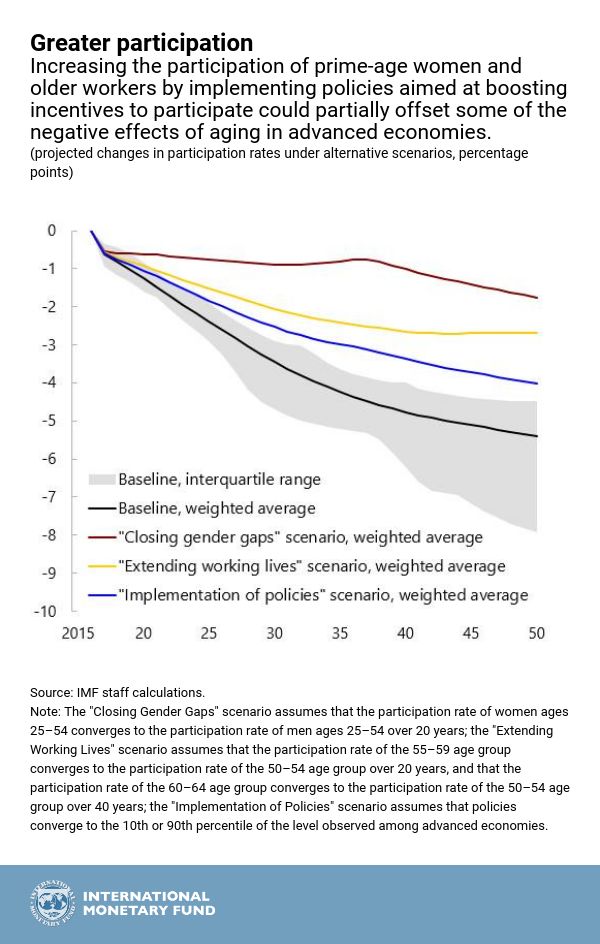Population growth in advanced economies is slowing, life expectancy is rising, and the number of elderly people is soaring. Because older workers participate less in the labor market, the aging of the population could slow growth and, in many cases, threaten the sustainability of social security systems. But, as our research in Chapter 2 of the April 2018 World Economic Outlook shows, there is considerable scope for policies to mitigate the forces of aging by enabling those who are willing to work to do so.
Striking differences
In the past decade, population aging accelerated significantly in almost all advanced economies as the exceptionally large cohort of people born in the years following World War II began reaching retirement age. The dependency ratio (measured as those ages 65 and older as a percent of those ages 20–64) for the median country increased from 27 percent in 2008 to 34 percent currently, and is expected to increase to a striking 55 percent by 2050 as demographic trends accelerate.
Yet, even though aging is already exerting pressure on the supply of labor, there are considerable differences in the evolution and composition of aggregate labor force participation rates—defined as the fraction of population, ages 15 and over, either working or looking for work—in advanced economies.
For example, participation by women has increased dramatically since the mid-1980s. More recently, participation has picked up considerably among older workers, while it has fallen among the young. In almost all advanced economies, prime-age men, particularly those with lower educational attainment, have become increasingly detached from the labor force. The United States stands out among advanced economies having experienced a decline in both female and male prime-age labor force participation.
Various forces at play
Our research sheds light on the various forces that underlie these diverse trends across countries and for different workers. Analyzing historical patterns in aggregate and individual labor force participation across advanced economies, we quantify the relative importance of aging and economic cycles, labor market policies and institutions, structural factors, such as the rise of the service sector, and exposure and resilience to global forces, such as technological advances and trade, in influencing people’s decision to join, remain in, or reenter the labor force. The chart below illustrates the contribution of these factors to changes in participation of various groups of workers over 1995–2011 for the average advanced economy.
Our findings suggest that aging and the effects of the global financial crisis can explain a significant share of the decline in the participation rate of men during the past decade. However, rising participation of women over the same period demonstrates that policies can play a significant role in shaping labor supply decisions, and can help counteract the forces of aging.
We find that labor market policies and institutions, such as the tax-benefit system, public spending on active labor market programs (such as training), and policies targeted to encourage specific groups of workers to participate, together with gains in educational attainment and structural changes, account for the bulk of the dramatic increase in labor force participation of prime-age women and older workers in the past three decades. More supportive policy changes in Europe and larger gains in educational attainment among prime-age European women can also account for the striking difference in their participation trends relative to the United States.
Conversely, automation—while beneficial for the economy as a whole—has weighed on the participation rates of most groups of workers, with more persistent negative effects in the United States than in Europe. We find that individuals whose current or past occupations are more vulnerable to automation are significantly more likely to drop out of the labor force. But encouragingly, policies aimed at improving the job matching process in labor markets can partially offset this effect. Higher spending on education and active labor market programs, as well as access to more diverse labor markets, tend to lessen the negative link between automation and labor force attachment. Policymakers, however, should be mindful of the difficult adjustments from technological advances on some sectors, occupations, and geographic areas.
Encouraging labor force participation
Policies that encourage workers to join or remain in the labor force, and policies that help workers combine family and work life can broaden gains in participation. Public spending on early childhood education and care, flexible work arrangements, and parental leave can help attract women to the labor force. For older workers, reducing the incentives to retire early, by raising retirement ages or making pension systems more actuarially fair, could lengthen working lives, although these reforms should not jeopardize other goals, such as a basic social safety net for vulnerable individuals.
Ultimately, however, dramatic shifts in demographic structures projected in advanced economies could overwhelm the ability of policies to offset fully the forces of aging. Our illustrative simulations, depicted in the chart, suggest that aggregate participation will eventually decline—even if gender gaps are fully closed—and that the participation of older workers would have to rise significantly to stem the decline in aggregate participation. Bringing policies to what can be viewed as “best practice” (from the point of view of labor force participation) can mitigate some of the drag from aging.
Unless technological progress delivers offsetting productivity gains, many advanced economies may need to rethink immigration policies to boost their labor supply, alongside policies to encourage older workers to postpone retirement. Although receiving migrants can pose challenges for host countries, any efforts to curb international migration would further worsen demographic pressures.







